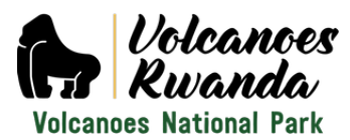A trip to Volcanoes National Park has become an area of debate among travelers today, given the fact that every one comes with his or her myths about gorilla trekking in Africa. Usually the following questions are unavoidable in life; how is gorilla trekking in Rwanda? Is it tough, rough or smooth? Which gorilla family is the easiest to track? These questions have impacted a lot on our travel dreams because either we have facts about what happens in that particular experience or we are totally green about it. Well, Rwanda is one of the premier countries for gorilla trekking in Africa; the others are Uganda and Democratic Republic of Congo (DRC). Despite the countless questions, gorilla trekking still stands as one of the most thrilling experiences in the world and only offered in the heart of Africa. It comes with magical encounters at the magnificent mountain gorillas in the wild which today only count not more than 880 in the whole world. Answers to gorilla trekking related questions are very scarce given the fact that there are numerous variables explaining about the same phenomena and this makes it hard to exhaust everything to get the visitor’s interest addressed desirably. But most importantly, we bear in mind that tracking gorillas in the wild is one of the life changing experiences that every one yearns to participate in.
A trek to view mountain gorillas in the Volcanoes National Park Rwanda is comprised of only two different stages. First and foremost the hike starting from visitors’ closet car park up to the jungles and the national park boundary that normally consumes half or an hour depending on the visitors speed; secondly, a trek into the jungle to track mountain gorillas of which in most cases there are trackers who are always sent to the field to locate where the gorilla groups can be easily found before the next group of visitors are set off to the field for their trek.
Usually, we can easily tell the first phase of the trek because it is normally on the gentle areas and doesn’t require a lot of energies unless if a visitor happens to be in Susa ‘A’ gorilla family where he or she will experience a bit of lengthy and breathtaking terrains. The second phase of this adventure is normally hard to predict as it all depends on the where the visitors can find the gorillas and altitude of the area. Other variables that make the trek to be rough include the density of the forest cover which involves much of bending and crawling; and then in case of rains that make the gorilla habitat to be muddy and slippery for visitors to trek. This explains why visitors run away from gorilla tracking in wet season.
Meanwhile, age and physical fitness are very key variables and they really describe how tedious the trek can be, take an example of the Susa gorilla family. It is not surprising that this gorilla family requires visitors with a bit of energy and mostly those within 30-40’s although people of 50’s and 60’s have done their best and at least they experienced some challenges. Before you conclude about the kind of trek in a destination, it is better that you sit down and ask yourself “which gorilla family have you been assigned to trek.” At the end of the day, you would have determined how it is challenging to track gorillas in that specific group. However, the fact still holds that the Susa gorilla family is the most demanding and yet also the most rewarding family in Volcanoes National Park whereas Sabyinyo gorilla family is normally the straightforward for hikers. The trek to Kwitonda, Hirwa and Group 13, also requires some energy and Amahoro, Umubano families may also be more challenging but not as Susa. No one can determine which gorilla family you are to trek!
Furthermore, the 2 variables like the underfoot conditions and altitude in most cases gives weaker hikers a big challenge given the fact that many of the travelers to Africa are city dwellers where walking on paved roads is the order of the day and when they go for the trek, things become more challenging. There is no need to underrate the tedious impact of altitude, the trek occurs between 2500 and 3000 meters above sea level. Looking at this altitude you will think that staying in the country for some period of time is worthwhile getting used to steep slopes before the actual trek and yet it isn’t the case. Rwanda generally is located within 1500 meters and much of it is higher. You will really need a lot of water to cool to down the thirst and help you keep fit for your trek.
In conclusion, Rwanda Safaris to see gorillas are tedious but reward visitors with unforgettable experiences in the wild. Visitors certainly forget about the exhaustion while at their face to face encounters with tremendous silverback gorillas! Volcanoes National Park is worthy visiting for gorilla tracking for life changing experiences.


